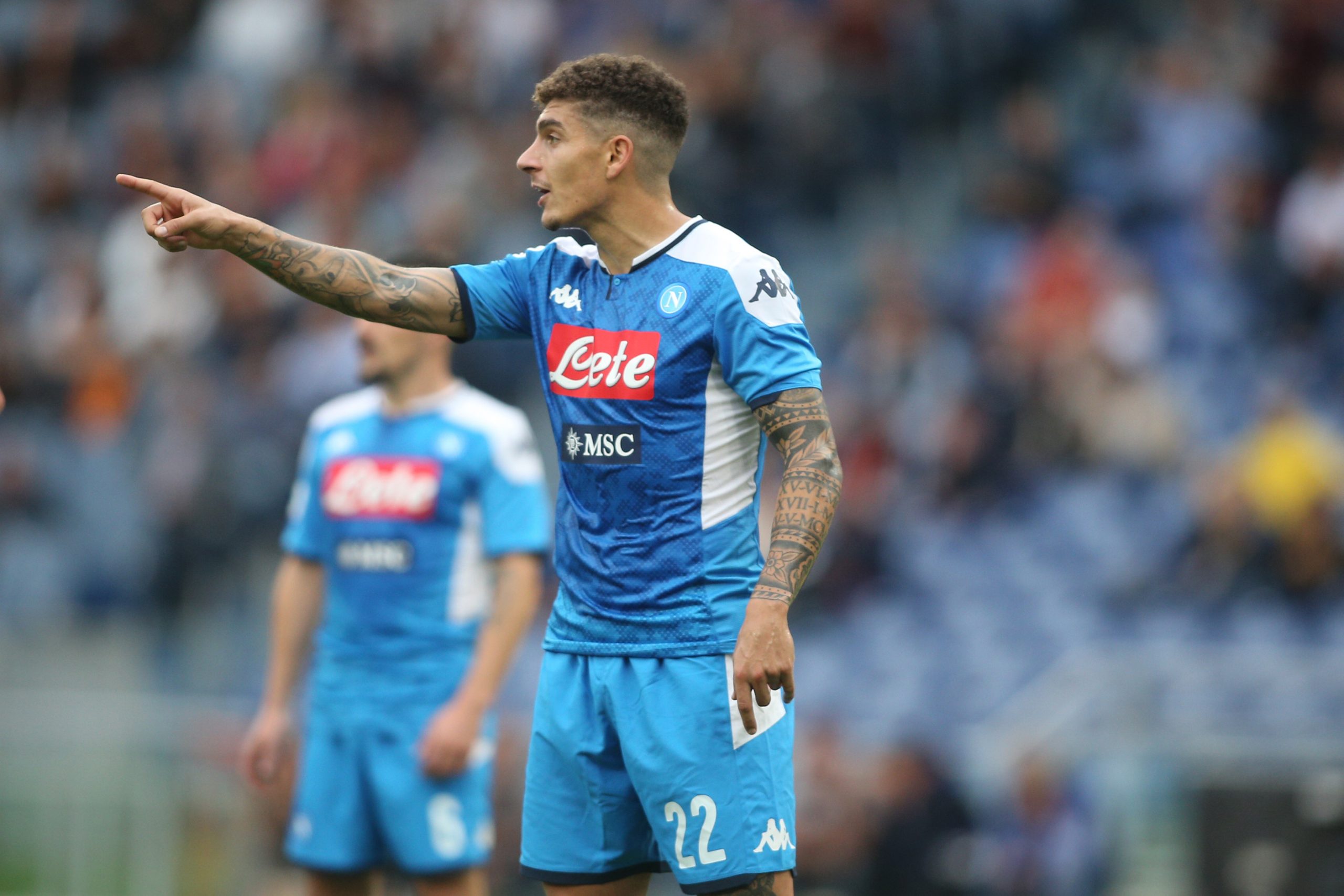Napoli and Atalanta are the only teams in Serie A's top six that have the same coach leading the team as last season. Considering that they kept their core practically intact, it was fair to expect that the Azzurri would start strong, while the other teams got used to new methods of work and different tactics.
And yet, after eleven games, Ancelotti's team has collected only 18 points out of a possible 33. They've lost to Juventus at the Allianz Stadium in an even contest and at home against Cagliari, and in Rome on Saturday against AS Roma. They have also drawn 3 disappointing matches against Torino, SPAL and Atalanta, games in which they were unable to turn their superiority into a win.
There's no obvious reason why the team hasn't been able to keep up with Juventus and Inter so far, who have already gained leads of 11 and 10 points respectively. However, the trend is worrying because in the first 19 games of the 2018/19 season, Napoli lost only 13 points of the total possible amount and conceded a total of 17 goals, while so far this season they have already dropped 15 points and have let the ball in 15 times in basically half of the games.
Defense
Usually elite teams concede roughly nine shots per game but for now, in Serie A, only Juventus concede less than 11 shots on average (they're best in the league with 10.82). Ancelotti's Napoli has never been exceptional in suppressing shots, but this year they've been worse than ever, conceding 13.00 shots per game (ninth in the league). A not so radical decline compared to last season when Napoli was third in the league with 11.50 shots conceded. However, Napoli tend to concede low-quality scoring chances: last season they topped the league both in non-penalty expected goals conceded (0.81 per game) and in xG per shot (0.071).
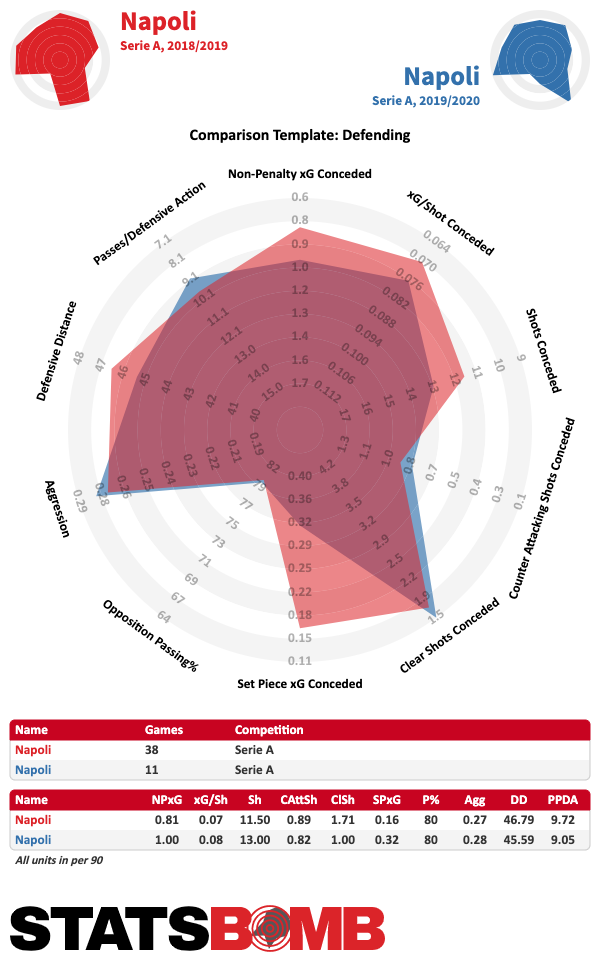
The 2019/20 version of the team also manages to keep opponent's shot quality low (0.077 xG per shot), but the increase in the number of shots conceded to the opponents has resulted in an increase of about 25% in the xG conceded per game (1.00) a value that puts them fourth in the league.
Judging from the radar, there could be a problem with set-pieces, too: they conceded twice on headers from dead ball situations plus Kalidou Koulibaly’s own goal against Juventus. Their 0.32 set piece xG conceded is the 4th worst value in the league but the set pieces shots sample is still too small to make a definitive judgment. It’s more likely that the slight worsening may have to do with the change of personnel and in general with a more aggressive defensive strategy compared to last season.
This summer, Napoli replaced Raul Albiol with Konstantinos Manolas, a less technical defender but much quicker and more athletic than the 34-year-old Spaniard, intending to provide Ancelotti with a center back that is less vulnerable in the open field and therefore better suited to support the team's high pressure.
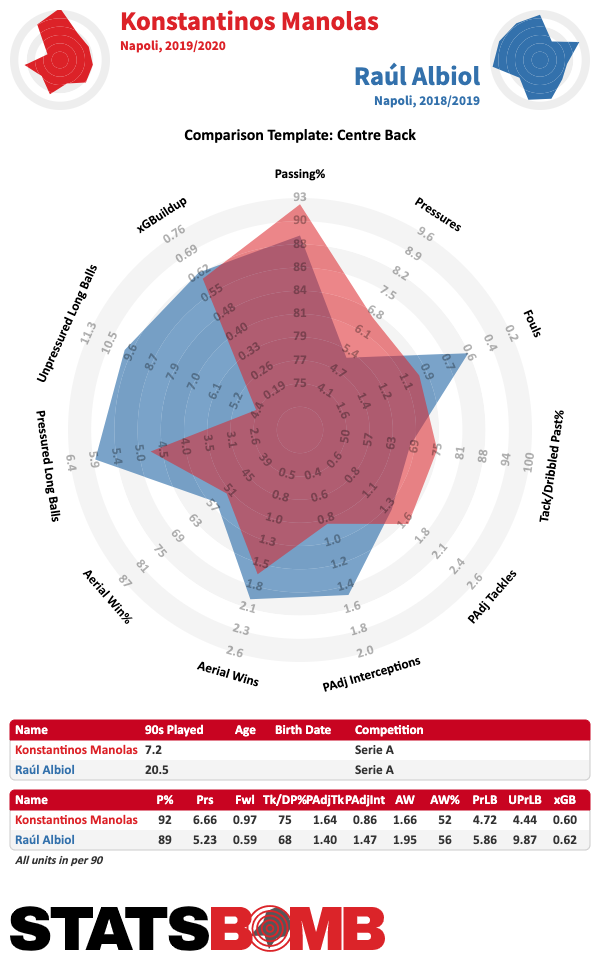
As you can see, the Greek defender is tougher to beat in individual duels than Albiol last season and is also more aggressive (more tackles, more pressures, and more fouls), while the Spaniard collected more interceptions. In possession, however, you notice the difference in the use of long balls, as Manolas is not exactly a superb ball-playing defender.
The other addition in defense was that of the Empoli’s rightback Giovanni di Lorenzo who imposed himself over Elseid Hysaj and Kevin Malcuit (whose season is already finished after a devastating knee injury). The Italian defender has not posted impressive numbers, but he is important as he is used to balance the system, since he plays as an added center back when Napoli attack, with Faouzi Ghoulam or Mario Rui pushing forward on the opposite side.
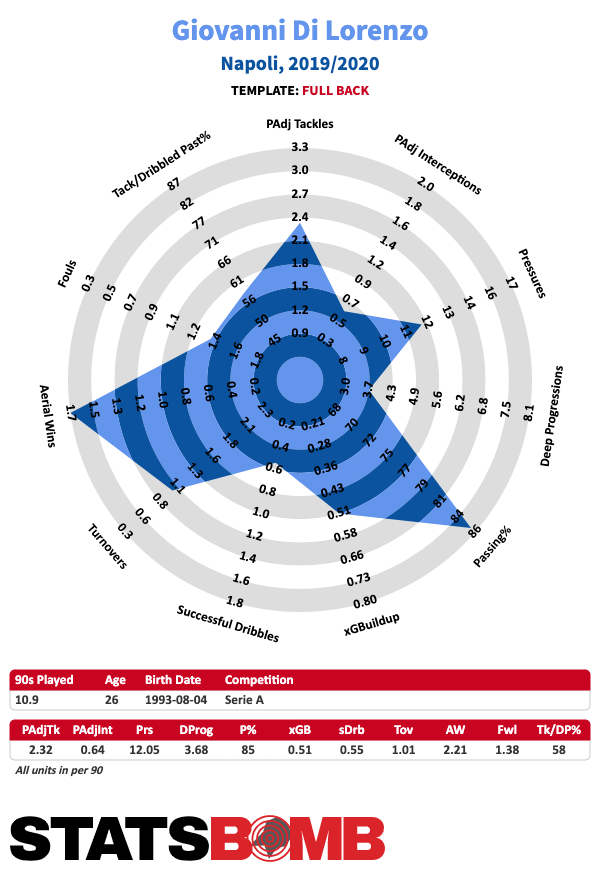
With this new personnel setup, Napoli has elevated their aggression coefficient, a metric that measures the proportion of passes that are aggressively pressed, to elite levels. Their 0.28 is the highest in Serie A along with that of Milan (!). Their reinvigorated pressing makes them the league leaders in pressures regains (34.18) to which they add 37.55 counterpressures. More pressing could mean more potential risks, but Napoli lowered both the number of counterattacking shots and clear shots conceded as compared to last season.
The main issue with this approach, which is more difficult to get out of the data, is that if Napoli's press is broken, the team inevitably becomes vulnerable. In fact, when the team presses it keeps the three-man defense, but when the opposing team manages to consolidate possession, the Azzurri shift to a four-man defense with the leftback who has to quickly rejoin the defensive line, with Di Lorenzo moving wider on the right.
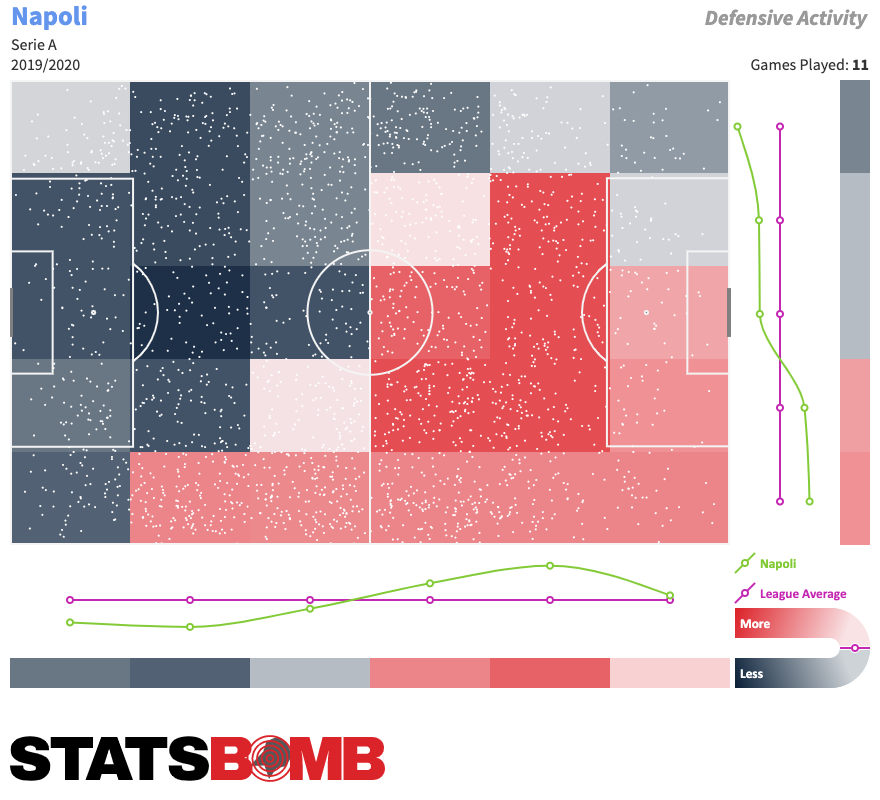
A clear asymmetry between the two sides emerges from the graph of Napoli's defensive activity: the left side is below league average for number of defensive actions, while the right side is above league average. This is a trend that was not observed last season, even though Ancelotti had already started to use this kind of setup, albeit with different players.
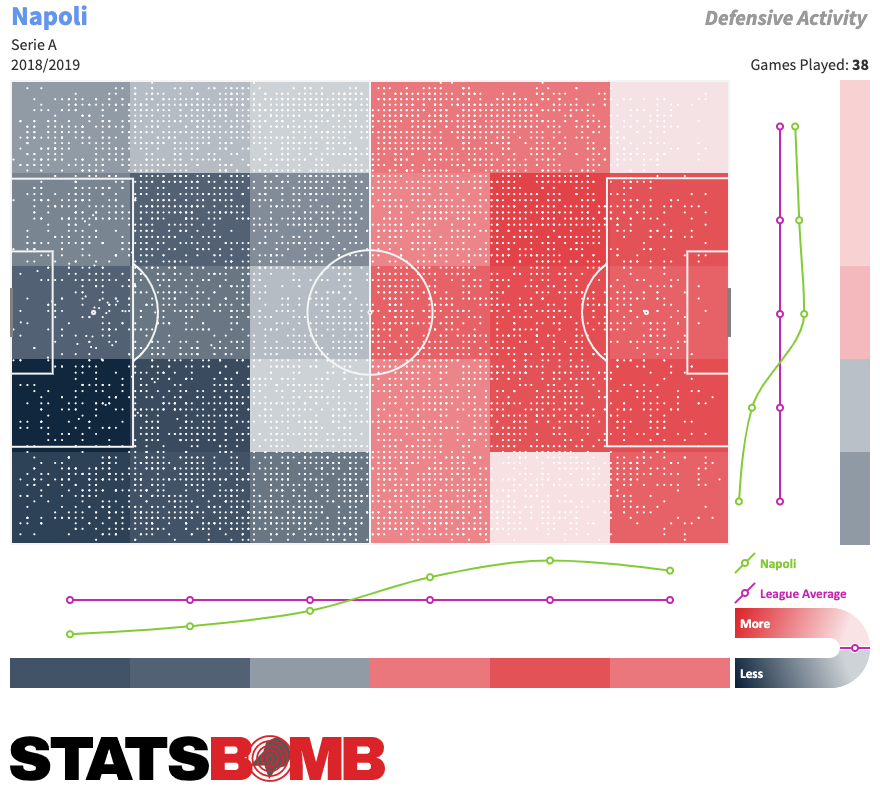
Due to this structure, Napoli are vulnerable against switches of play and often struggle to maintain vertical compactness. This can make them exposed against higher-level teams that can effectively execute their build-up play under pressure, like Roma. And, as we're about to get to, there are an increasing number of teams that are getting betting offensively, performing even better than Fonseca’s Roma side.
Attack
Napoli's underlying attacking numbers are similar to those of past seasons when they were the highest flying attack in the league. This season, they might have lost the throne in favor of goal-machine Atalanta, but they are maintaining exactly the same non-penalty xG average of 2018-19, 1.65. The thing is that other top-6 teams got better.
In comparison with last season Inter (1.62), Juventus (1.60), Lazio (1.57), and Roma (1.48) are producing much more from an offensive point of view. Ancelotti might have built a fluid offensive scheme which produces goals regardless of what players are playing which roles but the rest of the league seems to have caught up to them and Napoli have lost their edge in the number of xG generated.
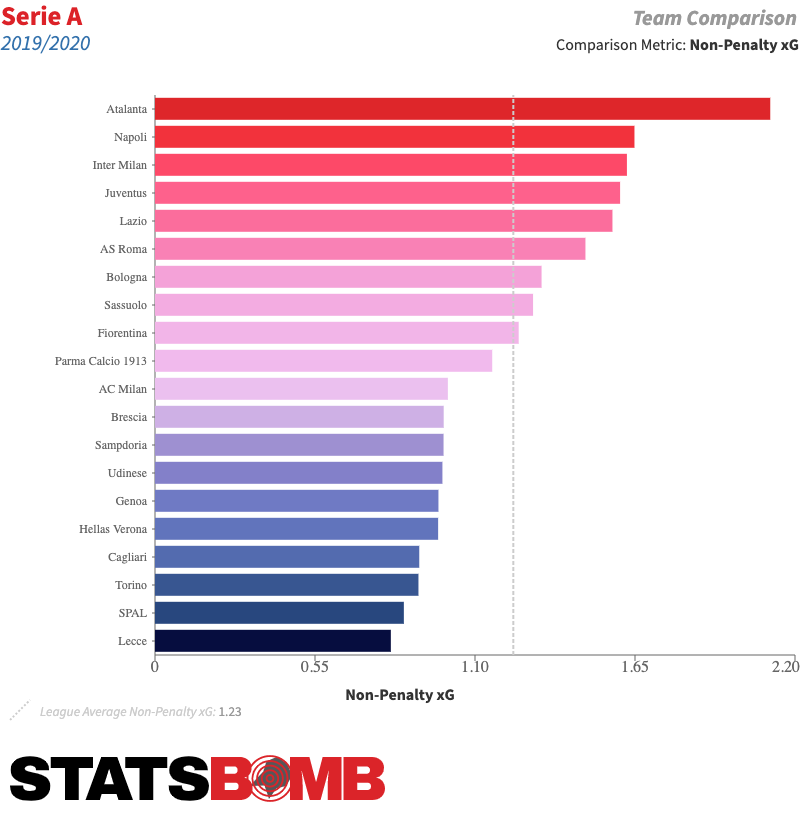
The Azzurri are no longer benefiting from the finishing that last year handed them a differential of almost eight extra goals against the xG generated. So far this season they've scored exactly the amount of goals they were expected to (19 out of 18,84 non-penalty xG), while last season, the ratio between non-penalty goals and non-penalty xG was 1.12.
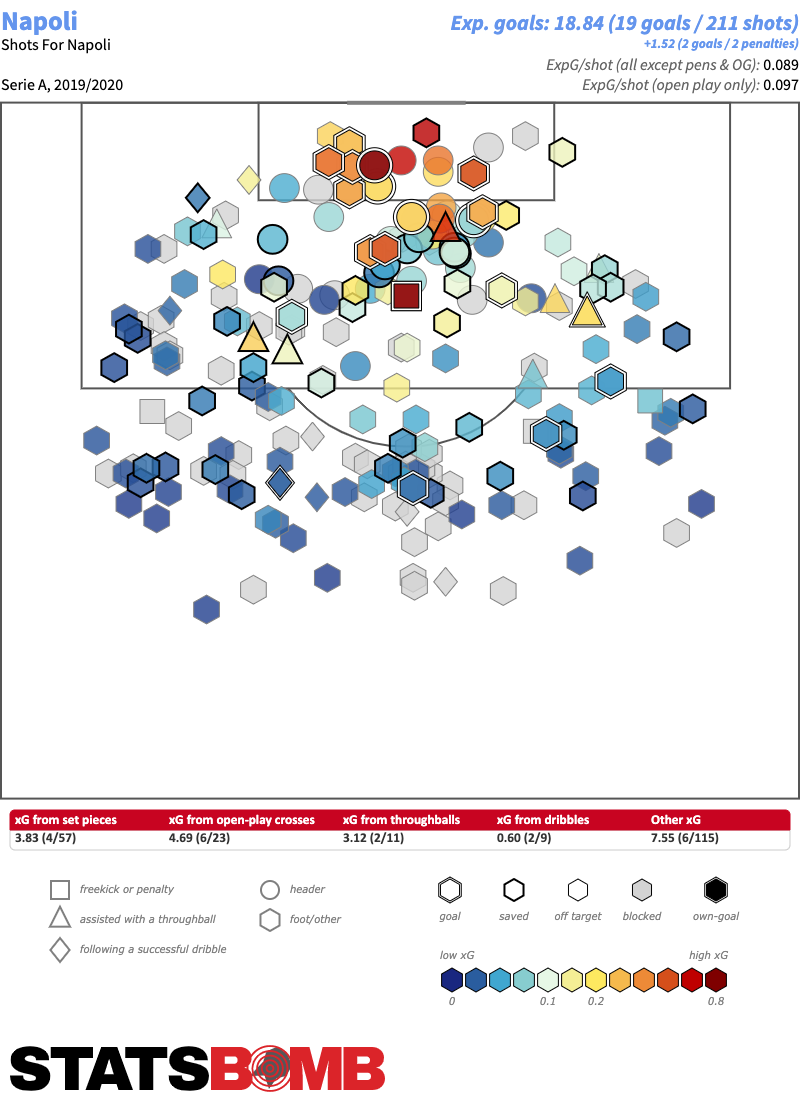
This figure also puts an end to questions about Napoli being unlucky so far: they are simply not maintaining last year's above expectations performance.
Napoli can therefore no longer rely solely on an offensive production far superior to the rest of Serie A, nor on above average finishing to play the role of Juventus' number one enemy. Napoli were the best team for xG difference last season, but so far Juventus and Atalanta have been in a different league in comparison to them, while Inter, Lazio and Roma are offering performances similar to those of Ancelotti’s team.
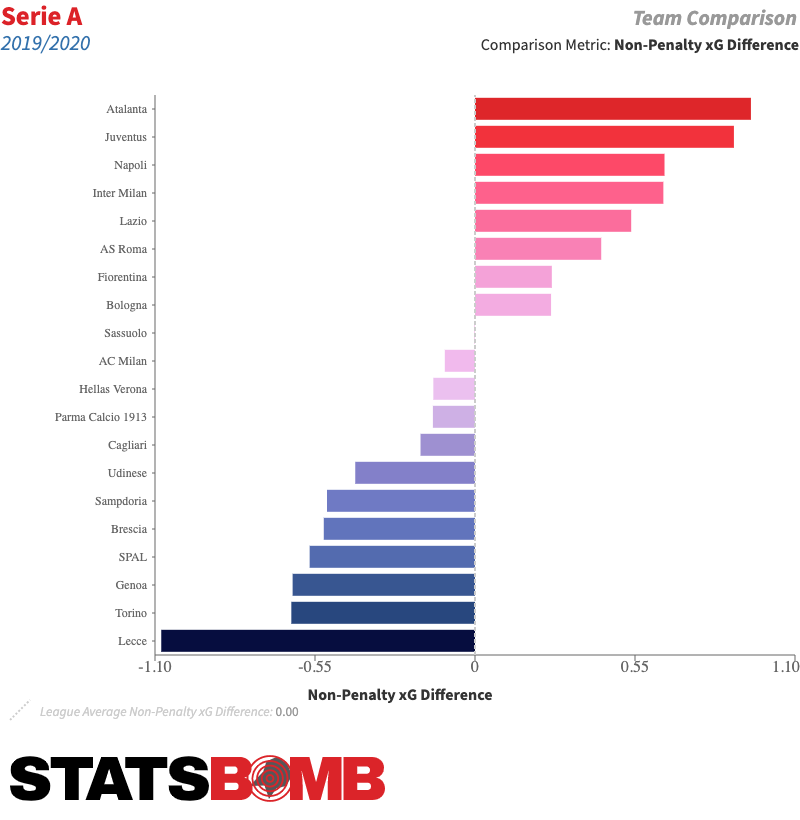
This is the key point: Napoli have been the only team able to compete with Juventus in recent seasons, but there has always been a bigger gap between the Bianconeri and the Azzurri than between the Azzurri and the rest of the league's top teams.
Other teams have improved, especially offensively, so much so as to challenge the position of Napoli as the second-best team in the league. To save their status, Ancelotti will have to restore the defensive phase to last year's levels without sacrificing offensive production or finding a way to make a further leap in their attack. Neither will be an easy goal to achieve.
